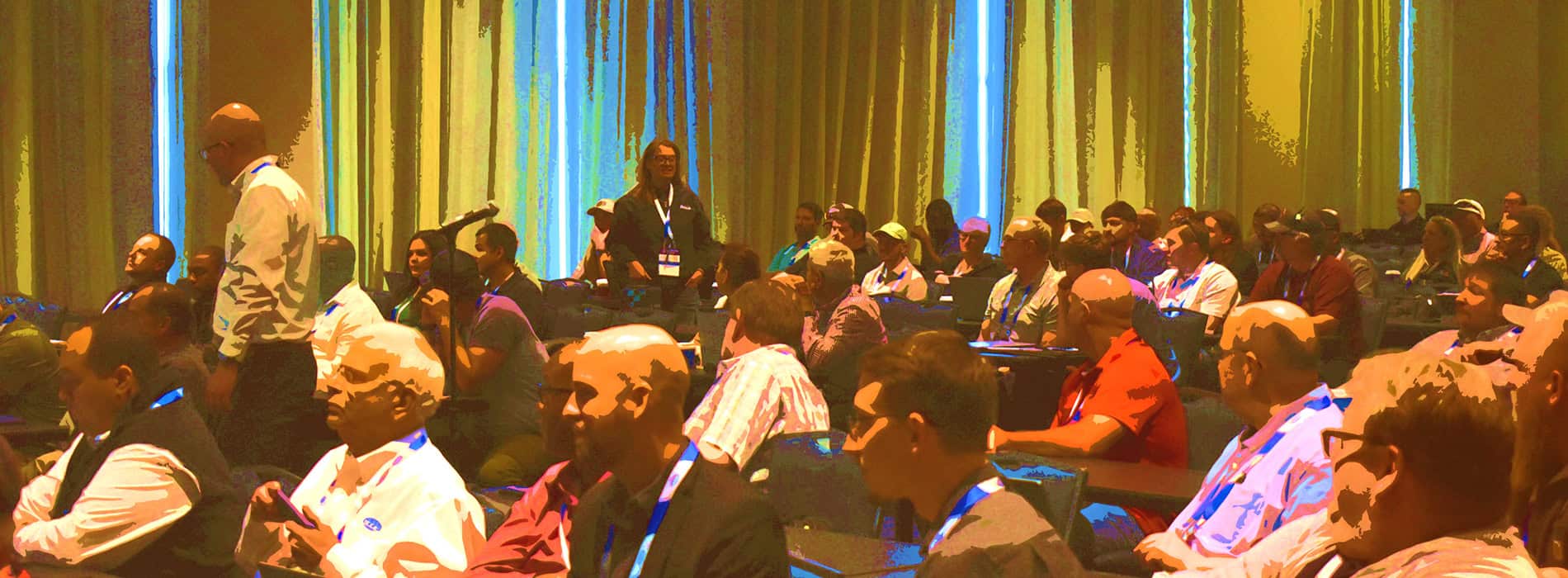La fuerza laboral de P&C: Todavía en desarrollo, Parte 2
Como reveló la conversación durante el foro Pulse of the Industry en el Seminario sobre protección 2025, el desarrollo de una fuerza laboral capacitada en P&C de sistemas sigue siendo una preocupación apremiante. La demanda de talento está en aumento, pero la preparación de los trabajadores sigue siendo un desafío importante tanto para los nuevos empleados como para los empleadores.
Lanzados al ruedo
Un asistente comentó lo siguiente, reflejando una desconexión entre la preparación académica y la realidad del trabajo relacionado con P&C:
«Me gradué como ingeniero eléctrico. No vi un relé hasta que llegué a mi trabajo, dentro de la caseta de control de una subestación, y allí estaba este relé frente a mí».
Su historia no era la única. Varios asistentes hablaron sobre cómo sus programas universitarios se centraban en tantas materias diferentes que «solo tenían una clase en la que hablábamos sobre un relé, pero en realidad nunca vimos uno».
Los nuevos empleados en el campo de P&C a menudo se encuentran en una posición difícil, sintiendo la presión de aprender las cosas lo más rápido que puedan mientras intentan contribuir incluso cuando todavía están aprendiendo. El consenso en la sala fue que se necesita más exposición a los relés mientras se está en la facultad para preparar a los graduados para el mundo real y ayudar a las empresas de servicios públicos a retener y hacer crecer el talento con una incorporación que sea menos abrumadora y desalentadora para todos los involucrados.
Desarrollo de experiencia práctica: Laboratorios y aprendizajes
Algunas organizaciones están invirtiendo en entornos de capacitación práctica. Un participante describió un enfoque proactivo:
«Comenzamos un laboratorio donde tenemos diferentes tipos de bastidores para distintos tipos de protecciones, como protección de línea, falla de interruptor, diferencial de transformador… los distintos esquemas que utilizamos. Usamos ese laboratorio para cualquier ingeniero o técnico nuevo, donde podemos probar la configuración de los relés y además los tenemos conectados a equipos exteriores que funcionan como equipos “simulados” o de prueba. Nos ha permitido ayudar a los ingenieros más jóvenes a comprender las configuraciones, por qué las realizamos y cómo protegen el sistema».
Este tipo de experiencia inmersiva es invaluable. No solo acelera el aprendizaje sino que también desmitifica el propósito y la función de los esquemas de protección. Los programas de aprendizaje, aunque rigurosos, ofrecen caminos estructurados para el crecimiento, siempre que estén respaldados por tutorías y expectativas claras.
Tutorías en el campo: Aprendizaje a través de la práctica
La tutoría surgió como otro tema crítico. Un asistente compartió un modelo simple pero efectivo:
«La forma en que comencé a aprender fue cuando el técnico senior me dijo: ‘Hazlo todo, yo lo revisaré’. Ese fue el primer día en el campo. Él todavía enseña revisando mi trabajo, lo cual funciona bien para que yo aprenda y, al mismo tiempo, para que él pueda enseñar y seguir activo en el campo».
Aprender con la práctica bajo la atenta mirada de un profesional experimentado puede ser transformador. Fomenta la responsabilidad, genera confianza y garantiza que el conocimiento se transmita en contextos del mundo real.
Exposición temprana: Acercando el talento del futuro
Quizás la idea más vanguardista surgió de una empresa de servicios públicos que trabaja en una zona rural:
«Por dos años consecutivos, hemos llevado a estudiantes de secundaria locales y les hemos dado visitas guiadas… dejándoles tocar un relé de bloqueo, un panel… tratando de generar interés de aquí a cuatro años».
Esta iniciativa reconoce que el desarrollo de la fuerza laboral no tiene por qué comenzar en la graduación. Al asociarse con escuelas y colegios comunitarios locales, las empresas de servicios públicos pueden despertar interés desde el principio y crear una línea de futuros técnicos e ingenieros que ya comprenden los conceptos básicos de P&C.
Llegar temprano
Los comentarios del foro Pulse of the Industry dejan una cosa clara: el futuro de la protección y el control de sistemas depende del desarrollo intencional y colaborativo de la fuerza laboral. Las universidades deben integrar herramientas del mundo real en sus planes de estudio. Las empresas de servicios públicos deben invertir en laboratorios, aprendizajes y tutorías. Y la industria en su conjunto debe interactuar con los jóvenes mucho antes de que ingresen al mercado laboral.
Información adicional:
Publicado originalmente en el boletín The Relay™. Suscríbase en LinkedIn.






